HPCMP Commercial Enterprise Software License Portfolio for FY2024

Renewals, Changes, and Additions
The HPCMP and Enterprise Software Management Team (ESMT) are pleased to announce the HPCMP Commercial Scientific and Engineering Software license portfolio agreements for the period of 1 Apr 2024 to 31 Mar 2025, which apply to the unclassified enclaves at each DSRC.
The transition from FY2023 to FY2024 includes the following changes:
ADDITIONS:
- Increase in Star-CCM+ Serial Pre/Post licenses
- Increase in Pointwise licenses
To meet demand, FY2024 StarCCM+ Serial Pre/Post licenses have been increased by an additional unit. There will also be an increase of three units of Pointwise meshing software.
REDUCTIONS:
- Decrease in Ansys HPC Packs
- Decrease in Ansys CFX/Fluent solvers
- Discontinued support of GASP
To balance usage and the increasing cost of Ansys licenses, the Ansys HPC Packs and CFX/Fluent solvers have been decreased to help balance usage-to-cost ratio. Due to extremely limited usage, the HPCMP has discontinued support for GASP in FY2024. Due to the selection of perpetual licenses, users will have access to Q1-2024 builds of GASP to allow for easy transition off the code.
License availability can be monitored through the User Dashboard. Additional information is available by contacting the HPC Help Desk by email (help@helpdesk.hpc.mil) or by phone (1-877-222-2039).
Software Breakdown
Abaqus
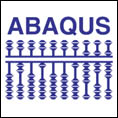
Abaqus is a general-purpose, finite-element analysis program that places special emphasis on advanced linear and nonlinear structural engineering and heat transfer applications.
Abaqus/Standard provides a variety of time- and frequency-domain analysis procedures. These procedures fall into two classes (defined below) and a single simulation can include multiple analysis types.
- General Analyses - the response may be linear or nonlinear.
- Linear Perturbation Analyses - linear response is computed about a general, possibly nonlinear, base state.
Abaqus/Explicit is a finite element program designed specifically to serve advanced, nonlinear continuum and structural analysis needs. The program addresses highly nonlinear transient dynamic phenomena and certain nonlinear quasi-static simulations. Designed for production analysis environments, key ingredients in its architecture are: ease of use, reliability, flexibility, and efficiency.
Abaqus/Viewer is an interactive postprocessor for the ABAQUS suite of general-purpose finite element-based analysis software.
Abaqus/CAE is an interactive modeling and results evaluation tool for analyses solved with Abaqus/Standard or Abaqus/Explicit.
Licensed Units:
- Main solver (Abaqus) tokens = 359
- Standard/Explicit solvers rely on tokens from the main solver pool.
- Review SLB documentation on quantity of tokens required for jobs.
- Standard/Explicit solvers rely on tokens from the main solver pool.
- Abaqus/CAE = 10
- Abaqus/Viewer = 4
Portfolio changes for FY2024:
No changes
Usage Notes:
Abaqus solver usage is controlled by the Shared License Buffer (SLB) system. Please refer to the SLB User Guide for further information on how to submit an Abaqus job.
Abaqus/CAE and Viewer interactive sessions perform best through SRD or on the HPC Portals.
Ansys

ANSYS/CFX offers flexible computational fluid dynamics (CFD) software with the capability of solving a variety of fluid flow problems, including laminar, turbulent, compressible, and incompressible flow.
ANSYS/Mechanical CFD Maxwell multiphysics package offers the full depth and breadth of simulation possibilities. This package offers the most effective multiphysics analysis for products needing electronic, fluid, and structural simulations.
NOTE: Currently, the HPCMP does not support ANSYS/EMAG solver capability.
Licensed Units:
- Main Fluent / CFX solver (concurrent jobs) = 14
- Mechanical Maxwell Solvers (concurrent jobs) = 4
- Workgroup (single core) tokens = 1,024
- Pack (multiplier core) tokens = 39
- Varied array of pre/post processing tools and solve equations
Portfolio changes for FY2024:
Main Fluent/CFX solvers were decreased from 16 unclassified units last cycle to 14 units. Ansys HPC Pack tokens (anshpc_pack) were decreased from 44 unclassified units last cycle to 39 units. Please review Ansys HPC packs in the SLB User Guide for further details.
Usage Notes:
Ansys solver usage is controlled by the Shared License Buffer (SLB) system. Please refer to the SLB User Guide for further information on how to submit an Ansys job.
Ansys Workbench interactive sessions perform best through SRD or on the HPC Portals.

Ansys - EnSight
EnSight is an advanced post-processing tool used for all types of engineering analyses, including CFD, combustion, structural analysis, crash, and injection molding. It provides readers and translators for all common engineering analysis codes, as well as interfaces to common aerospace formats such as PLOT3D and FAST.
Licensed Units:
- EnSight Standard interactive session licenses = 11
- EnSight Gold interactive session licenses = 5
Portfolio changes for FY2024:
No changes
Usage Notes:
Although EnSight is available through Ansys Workbench, the Data Analysis and Assessment Center (DAAC) has created a customized EnSight HPC Client-Server Software for use with HPCMP systems. Users are advised to use this software, as the Ansys EnSight licenses are configured to only work with the DAAC EnSight client-server tools.
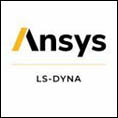
Ansys - LS-DYNA
LS-DYNA is a general-purpose, explicit finite element program used to analyze the nonlinear dynamic response of three-dimensional structures. It contains fully automated contact analysis capability and error-checking features. LS-DYNA has many solution procedures to simulate the physical behavior of 3D structures: nonlinear dynamics, thermal, failure, crack propagation, contact, quasi-static, Eulerian, arbitrary Lagrangian-Eulerian (ALE), fluid structure interaction, real-time acoustics, multiphysics coupling, etc. For the under-integrated shell and solid elements, zero-energy modes are controlled by either an hourglass viscosity or stiffness.
Licensed Units:
- Total concurrent solver tokens (dyna & mppdyna) = 1,500
- LS-DYNA usage requires 1 token per active thread (core)
Portfolio changes for FY2024:
No changes
Usage Notes:
LS-DYNA solver usage is controlled by the Shared License Buffer (SLB) system. Please refer to the SLB User Guide for further information on how to submit a LS-DYNA job.
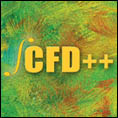
CFD++
CFD++ can solve compressible flows (at Mach numbers) and incompressible flows, including both single and multispecies treatment, reacting flows, multiphase flows, steady and unsteady flows, rotating machinery, conjugate heat transfer, porous media, etc. Various topography-parameter-free models are used to capture turbulent flow features. The nonlinear subset of these models accounts for Reynolds stress anisotropy, streamline curvature, and swirl. All these models can be either integrated directly to the wall or combined with a sophisticated wall-function treatment that models the effects of compressibility, pressure gradient, and heat transfer. A single equation LES model and advanced hybrid LES/RANS models are also available. The latter reduces the cost of traditional large-eddy simulation by modeling the near-wall layer and automatically exploiting the advantages of LES in embedded fine-grid regions. CFD++ allows for treatment of complex geometries by its unification of structured, unstructured, and multi-block grids. CFD++ can also handle complex overset and patched non-aligned grids. The code allows use of various elements within the same mesh such as hexahedral, triangular prism, pyramid and tetrahedral elements in 3-D, quadrilateral and triangular elements in 2-D, and line elements in 1-D.
Licensed Units:
- Licensed for unlimited jobs/cores at all DSRCs
Portfolio changes for FY2024:
No changes
Usage Notes:
N/A

Linaro Forge
Forge is comprised of the DDT parallel debugger and the MAP scalable profiler.
DDT is a C++, C, and FORTRAN parallel debugger, with native support for parallel debugging of Python applications.
The MAP profiler can identify over-subscribed cores and sleeping threads that waste available CPU time for OpenMP and pthreads. It can also identify synchronization, communication, and workload imbalance for MPI or multi-process usage, and provide I/O performance metrics.
Licensed Units:
- Max debugger cores = 8,192*
- Only supports Intel and AMD architectures
- Accelerator cards - 64
- Licensed for CUDA architecture
Portfolio changes for FY2024:
No changes
Usage Notes:
N/A

FieldView
FieldView is a CFD post-processing software package that identifies flow features and characteristics in simulations and allows interactive exploration of results.
Licensed Units:
- Interactive session licenses = 15
Portfolio changes for FY2024:
No changes
Usage Notes:
FieldView interactive sessions perform best through SRD or on the HPC Portals.
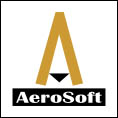
GASP
GASP is a structured/unstructured, multi-block CFD flow solver, which solves the Reynolds Averaged Navier-Stokes (RANS) equations as well as the heat conduction equation for solid bodies.
Licensed Units:
- None
Portfolio changes for FY2024:
GASP licensing will be discontinued in FY2024.
Usage Notes:
GASP usage is controlled by the Shared License Buffer (SLB) system. Please refer to the SLB User Guide for further information on how to submit a GASP job.
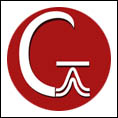
Gaussian
Gaussian is a series of electronic structure programs used by chemists, chemical engineers, biochemists, physicists, and others for research in established and emerging areas of chemical interest. Starting from the basic laws of quantum mechanics, Gaussian predicts the energies, molecular structures, and vibrational frequencies of molecular systems, along with numerous molecular properties derived from these basic computation types. It can be used to study molecules and reactions under a wide range of conditions, including both stable species and compounds, which are difficult or impossible to observe experimentally, such as short-lived intermediates and transition structures.
Licensed Units:
- Licensed for unlimited jobs/cores at all DSRCs
Portfolio changes for FY2024:
No changes
Usage Notes:
N/A
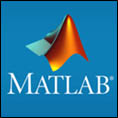
MATLAB
MATLAB is a high-level technical computing language and interactive environment for algorithm development, data visualization, data analysis, and numeric computation. Using MATLAB, some users solve technical computing problems faster than with traditional programming languages, such as C, C++, and Fortran.
Licensed Units:
- Main MATLAB interactive/solver license = 27
- TOOLBOXES
- SIMULINK = 4
- Communication_Toolbox = 2
- Control_Toolbox = 1
- Curve_Fitting_Toolbox = 2
- Signal_Blocks = 2
- Neural_Network_Toolbox = 2
- Fixed_Point_Toolbox = 1
- GADS_Toolbox = 2
- Image_Toolbox = 6
- MATLAB_Coder = 2
- MATLAB_Builder_for_Java = 10
- Compiler = 2
- MAP_Toolbox = 1
- Optimization_Toolbox = 4
- Distrib_Computing_Toolbox = 9
- PDE_Toolbox = 1
- Signal_Toolbox = 7
- Stateflow = 2
- Statistics_Toolbox = 9
- Symbolic_Toolbox = 2
- Identification_Toolbox = 1
- Wavelet_Toolbox = 1
- Distrib_Comp_Engine = 200
- Computer_Vision_Toolbox = 1
Portfolio changes for FY2024:
There will be an addition of 1 MATLAB Computer Vision AI/ML toolbox for FY2024.
Usage Notes:
MATLAB solver and toolbox usage is requestable by the Shared License Buffer (SLB) system. Please refer to the SLB User Guide for further information on how to submit a MATLAB job.
MATLAB interactive sessions perform best through SRD or on the HPC Portals.

Pointwise
Pointwise is CFD mesh generation software, covering all preprocessing from geometry model import to flow solver export.
Licensed Units:
- Interactive session licenses = 19
Portfolio changes for FY2024:
Due to increasing demand, Pointwise licenses were increased for FY 2024.
Pointwise session licenses were increased from 16 unclassified units last cycle to 19 units.
Usage Notes:
Pointwise interactive sessions perform best through SRD or on the HPC Portals.
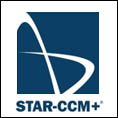
Star-CCM+
STAR-CCM+ is primarily CFD (computational fluid dynamics) software which uses the finite element analysis or finite volume method to calculate the transport of physical quantities on a discretized mesh. For fluid flow, the Navier-Stokes equations are solved in each of the cells.
Licensed Units:
- Main solver (GPU-enabled power session / ccmppower+) = 30
- Interactive session licenses (serial session / ccmpsuite) = 11
Portfolio changes for FY2024:
The StarCCM+ Serial pre/post licenses (ccmpsuite) were increased from 10 unclassified units last cycle to 11 units.
Usage Notes:
Star-CCM+ solver usage is controlled by the Shared License Buffer (SLB) system. Please refer to the SLB User Guide for further information on how to submit a Star-CCM+ job.
Star-CCM+ interactive sessions perform best through SRD or on the HPC Portals.

Tecplot
Tecplot is a complete (interactive) CFD (computational fluid dynamics) visualization tool that helps analyze, explore, and understand complex simulation data.
Licensed Units:
- Interactive session licenses = 18
Portfolio changes for FY2024:
No changes
Usage Notes:
Tecplot interactive sessions perform best through SRD or on the HPC Portals.
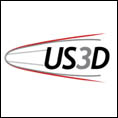
US3D
VirtusAero's US3D is a computational fluid dynamics (CFD) software that simulates fluid flow and heat transfer in complex geometries. It is used in the aerospace, defense, and energy industries for the design and optimization of gas turbine engines, rockets, and wind turbines, among other applications. US3D uses a high-fidelity unstructured mesh method, enabling accurate simulations even in complex geometries, and can handle high Reynolds numbers, turbulent flows, and a wide range of physical phenomena.
Licensed Units:
- Floating HPC solvers = 2
Portfolio changes for FY2024:
No changes
Usage Notes:
N/A
